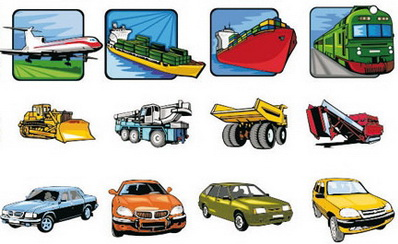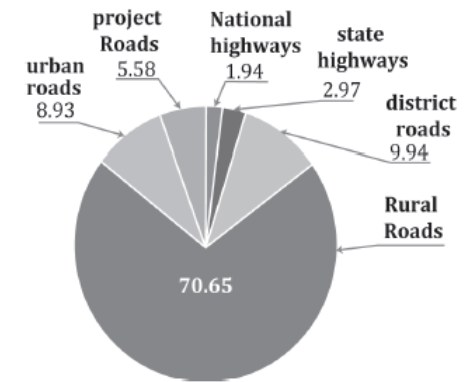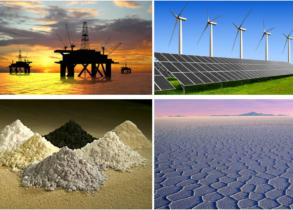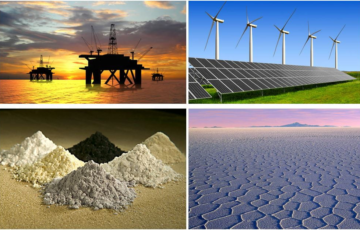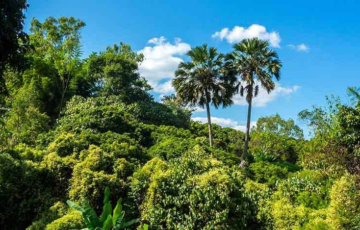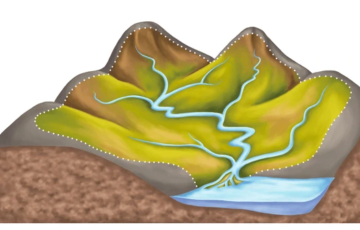TRANSPORT AND COMMUNICATION
Introduction
- The transportation system serves as the backbone of economic and social development, especially in a vast and diverse country like India. The development of an efficient and robust transportation network is crucial for connecting different parts of the country, promoting economic growth, and enhancing national integration.
- Fundamental to Development: Transportation is vital for moving passengers and goods, playing a pivotal role in the progress of any country, especially one as large and developing as India.
- Economic Arteries: Transport routes act as the country’s economic lifelines. The volume of traffic is a direct indicator of a country’s economic activity and progress.
- Geographical Expanse: India’s vast geographical spread, from Kashmir in the north to Kanyakumari in the south and from Kandla in the west to Kohima in the east, necessitates a well-connected transport system to maintain unity in diversity.
- Facilitator of Trade and Commerce: Efficient transport and communication systems are essential for the growth of trade and commerce, facilitating the movement of products, commodities, and ideas.
- Enabler of Mobility and Economic Activity: Transportation allows people to migrate and industries and trade to flourish, fueling economic growth and development.
Modes of Transportation
India’s transportation infrastructure encompasses land, water, and air travel, each with its unique advantages, challenges, and roles in the economy.
- Land Transportation
- Road Transport: Offers flexibility and door-to-door service, making it ideal for short to medium distances. It is crucial for the delivery of goods and services, especially in areas not serviced by rail.
- Rail Transport: Efficient for moving large volumes of goods and passengers over long distances cost-effectively. Railways serve as a critical component of India’s transport infrastructure, supporting economic and social development.
- Inland Waterways: While less prominent, inland water transport is an eco-friendly and cost-effective way to move bulky goods over long distances via navigable rivers.
- Pipelines: Specialized for transporting liquids and gases, pipelines contribute to the energy sector by ensuring the safe and efficient delivery of crude oil, petroleum products, and natural gas.
- Air Transportation: National and International Air Travel: Offers the fastest mode of transportation, essential for long-distance travel, high-value freight, and time-sensitive goods. Despite higher costs, air travel’s efficiency in saving time and energy makes it a preferred option for many.
- Waterways and Oceanic Routes: Seaways Critical for international trade, seaways enable the transportation of large and heavy goods across continents. Despite being slower, this mode is the most cost-effective for global trade.
Integration and Complementarity
- The various modes of transportation in India do not merely compete; they complement each other, creating an integrated network that facilitates the efficient movement of goods and people. This integration is vital for achieving social cohesion, economic success, and ensuring the country’s security and territorial integrity.
Road Transport in India
India boasts the second-largest road network globally, spanning approximately 54.8 lakh kilometers. This extensive infrastructure plays a crucial role in the nation’s economic and social development, facilitating the movement of goods and people across its vast landscapes. The evolution and expansion of India’s road network have been significant, especially since independence, reflecting the country’s commitment to improving connectivity and fostering economic growth.
Historical Development and Strategic Importance
- Post-Independence Initiatives: After gaining independence, India embarked on ambitious plans to expand and improve its road infrastructure. The twenty-year road plan introduced in 1961 marked a significant step towards enhancing the conditions of roads across the country.
- Sher Shah Suri’s Legacy: The historical Shahi (Royal) Road, built by Sher Shah Suri, was a monumental effort to consolidate his empire, stretching from the Indus Valley to the Sonar Valley in Bengal. Renamed the Grand Trunk (GT) Road during the British era, it now connects Amritsar to Kolkata, symbolizing India’s rich historical heritage and its evolution over centuries.
Classification and Functions of Roads
- National Highways (NH): Managed by the central government, these highways facilitate inter-state transport and are crucial for strategic defense movements. Despite constituting only about 2 percent of the total road length, they handle a significant portion of the traffic.
- State Highways (SH): These are pivotal in connecting state capitals with district headquarters and form an essential part of the national network by linking with NHs.
- District Roads: Serving as vital links within districts, these roads connect district headquarters with other significant areas.
- Rural Roads: Making up about 80 percent of India’s total road network, rural roads are essential for linking remote areas, though their distribution and density vary significantly across different regions.
Strategic and Developmental Initiatives
- Border Road Organisation (BRO): Established in 1960, the BRO plays a critical role in improving access to India’s northern and northeastern borders, enhancing the country’s defense preparedness.
- Expressways and Freeways: Representing the highest class of roads in India, expressways and freeways offer high-speed, controlled access, significantly reducing travel times and improving safety.
- Major Projects: Initiatives like Bharatmala, Golden Quadrilateral, North-South and East-West Corridors, and specific programs aimed at connecting district headquarters and promoting tourism and economic development highlight the government’s focus on enhancing road connectivity.
Technological and Modernization Efforts
- Electronic Toll Collection (ETC): Aimed at streamlining toll collection and reducing congestion, ETC systems have been implemented on key routes, with plans for further expansion.
- National Automotive Testing and R&D Infrastructure Project (NATRIP): This initiative seeks to establish state-of-the-art testing and R&D facilities, underlining the importance of innovation in the automotive and transportation sectors.
Challenges and Future Directions
- Despite significant achievements, India’s road transport sector faces challenges, including maintaining and upgrading infrastructure, ensuring equitable access to remote areas, and addressing environmental and safety concerns. The ongoing and planned projects reflect a comprehensive approach towards addressing these challenges, aiming to create a more integrated, efficient, and sustainable road transport system that supports India’s growth and development aspirations.
Significance of NHAI:
The National Highways Authority of India (NHAI) is a crucial entity in India’s infrastructural landscape, operational since 1995 under the Ministry of Road Transport and Highways (MORTH). This autonomous body is tasked with the development, maintenance, and operation of the national highways, which are pivotal for the country’s connectivity, economic development, and integration.
- Development and Maintenance: NHAI plays a vital role in ensuring that national highways are developed to meet increasing traffic demands and maintained to ensure safety and efficiency.
- Quality Enhancement: It is the apex body responsible for improving the quality of roads designated as national highways, which is critical for supporting economic activities, reducing travel time, and improving overall road safety.
- National Highways Development Projects: NHAI has embarked on several ambitious projects under different phases, aiming to enhance the connectivity and quality of the national highway network across the country. These projects are critical for supporting India’s growing transportation needs and facilitating smoother movement of goods and people.
Objectives as Specified by NITI Aayog
- Bharatmala Phase 1: Complete by 2021-22, aiming to enhance road connectivity across the country.
- Doubling National Highways: By 2022-23, which would significantly increase the network and its capacity.
- Regulatory Framework Improvement: For better compliance, road safety, and quality.
- Road Safety: In line with the Brasilia Declaration, aiming to reduce road accidents by 50% by 2020.
Factors Influencing Roadways in India
- Terrain and Economic Development: The nature of terrain and the level of economic development significantly influence road density and quality.
- Climate: Weather conditions affect road maintenance, especially in high-altitude, rainy, and forested regions.
- Industrial and Urban Development: Areas with higher economic and industrial activities have better road density and infrastructure.
Importance of Road Connectivity
- Rural and Tribal Connectivity: Essential for economic development and integration of remote areas into the mainstream economy.
- Strategic and Regional Development: Especially in regions like Jammu & Kashmir and the North-East, where road development is also a matter of strategic importance.
- Tourism and Local Economies: Roads play a crucial role in promoting tourism and supporting local economies across the country.
Challenges and Way Forward
- Attracting Investment: Enhancing investment in road infrastructure is critical for future development.
- Skilled Manpower and Infrastructure: Addressing the shortage of skilled manpower and improving infrastructure is essential for sustainable development.
- Energy and Environmental Concerns: With the rising demand for energy and concerns about environmental impact, there’s a need for sustainable and green transportation solutions.
Railways Transport in India
The Indian Railways system is not only pivotal for the country’s transport infrastructure but also holds cultural and historical significance, with two UNESCO World Heritage Sites enhancing its global recognition. Furthermore, the distribution of the rail network across India varies significantly due to geographic, economic, and demographic factors. The following tables elaborate on these aspects in detail.
UNESCO World Heritage Sites in Indian Railways
| Site Name | Location | Description |
| Chhatrapati Shivaji Maharaj Terminus | Mumbai | A historic railway station and a fine example of Victorian Gothic Revival architecture in India, serving as a major railway hub. |
| Mountain Railways of India | Various | This includes the Darjeeling Himalayan Railway, Nilgiri Mountain Railway, and Kalka-Shimla Railway, each offering unique engineering solutions to the challenges of their mountainous terrains and providing scenic beauty. |
Density of Rail Network in India
Regions of Dense Network
| Region | Characteristics | Reasons for Dense Network |
| Northern Plains and Eastern Coastal Areas | Level land, fertile soils, dense population, and industries | Favorable geography for rail construction, high demand for transport due to population density and industrial activity. |
| Plains of Gujarat and Saurashtra, Central Tamil Nadu, Chhotanagpur Plateau | Developed industries | Economic activities necessitating efficient transport networks for movement of goods and people. |
Regions of Moderate Railway Network
| Region | Characteristics | Reasons for Moderate Network |
| Peninsular Region (excluding Tamil Nadu and Chhotanagpur) | Hilly and plateau terrain | Unfavorable conditions for laying railway lines, though important industrial cities and ports are connected through long trunk routes. |
Regions of Sparse Railway Network
| Region | Characteristics | Reasons for Sparse Network |
| Himalayan Mountain Region (Jammu and Kashmir, Himachal Pradesh, Uttarakhand, Sikkim, Arunachal Pradesh) | Hilly terrain, rugged topography | Difficulties in construction due to topography; limited to foothill towns and specific narrow-gauge tracks like Kalka-Shimla and Siliguri-Darjeeling. |
| North Eastern Region | Hilly terrain, thick forest cover, heavy rainfall, low economy, sparse population | Geographic and economic challenges limit the development of railway infrastructure. |
| Desert Region of Western Rajasthan | Sparsely populated, few industries, hot and dry climate | Environmental conditions and economic factors make construction and maintenance of railway lines challenging. |
The Role of Railways in India’s Development
- Industrial and Economic Growth: Railways are instrumental in carrying coal, the backbone of India’s energy and industrial sectors, to coal-starved areas, thus promoting industrialization. By transporting raw materials and finished products, railways enhance industrial production and facilitate the growth of secondary industries.
- Promotion of Exports: The transportation of commodities like iron ore, cement, and food grains to ports helps India earn valuable foreign exchange, contributing to the country’s economic prosperity.
- Infrastructure Development: By moving cement and construction materials across the country, railways play a crucial role in building infrastructure, thereby stimulating economic activities and job creation.
- Agricultural Support: The distribution of fertilizers by rail boosts agricultural production, directly impacting food security and rural incomes.
- Energy Distribution: Transporting mineral oil from ports and refineries to the interior parts of India supports the industrial sector’s energy needs.
Challenges Facing the Indian Railways: The Indian Railways encounters several challenges, including the need for better passenger services, competition from other modes of transport, high operating costs, congestion, and the slow pace of electrification and connectivity, especially in difficult terrains.
Government Initiatives for Railway Development: The government has launched several initiatives to address these challenges, including the introduction of Dedicated Freight Corridors, privatization to bring in investment and innovation, restructuring of the Railway Board, the establishment of the Rail Development Authority, and the National Rail Plan. These efforts are complemented by modernization projects like electrification, development of green corridors, and safety enhancements.
Water transport in India: An Overview
Water transport represents an essential and eco-friendly mode of transportation that is both fuel-efficient and has a lower environmental impact compared to other modes of transport. It plays a crucial role in global commerce and local economies, offering a sustainable alternative for moving goods and passengers. The classification of water transport into inland and oceanic waterways highlights its versatility and widespread application.
Historic significance
- Inland waterways were the primary mode of transportation before the development of railways. These waterways include rivers, canals, and lakes used for the movement of goods and people within a country. Despite their initial significance, inland waterways faced stiff competition from road and rail transport due to advancements in these sectors. Additionally, the diversion of river water for irrigation purposes has rendered large portions of these waterways non-navigable, limiting their utility for transportation.
In India, the external trade is heavily reliant on ports, with around 90% of the volume and 70% of the value of trade being conducted through maritime transport. However, inland waterways account for less than 2% of the country’s freight traffic, indicating a significant underutilization of this transport mode.
National waterways development in India
- India boasts around 14,500 km of navigable waterways, including rivers, canals, backwaters, and creeks, which contribute about 1% to the country’s transportation. However, only 5,685 km of major rivers are navigable by mechanized vessels, indicating room for development and enhancement of the inland water transport infrastructure.
- The Inland Waterways Authority of India (IWAI), established in 1986, is responsible for the development, maintenance, and regulation of national waterways in the country. This authority plays a pivotal role in enhancing the efficiency and capacity of inland water transport.
- Kerala’s backwaters are a unique feature of India’s inland waterway system. These waterways not only provide a cheap and sustainable means of transport but have also become a major tourist attraction, showcasing the potential of inland waterways to contribute to local economies beyond just transportation.
- The development and utilization of waterways for transportation in India have been a strategic initiative to enhance the country’s logistics and reduce the load on road and rail infrastructure. The National Waterways (NW) are a part of this initiative, focusing on creating a network of navigable waterways across the country.
Important waterways in India
| National Waterway | Stretch | Length (km) | Key Features |
| NW-1 | Allahabad-Haldia stretch | 1,620 | Connects the northern region with the eastern part of India.
Facilitates cargo movement to and from major ports like Haldia. Supports the transportation of coal, food grains, and industrial products. |
| NW-2 | Sadiya-Dhubri stretch | 891 | Located in the northeastern part of India, enhancing connectivity in a remote region.
Plays a crucial role in transporting bulk goods in the region. Offers a sustainable alternative to road and rail transport in this ecologically sensitive area. |
| NW-3 | Kottapuram-Kollam stretch | Not specified | Situated in Kerala, known for its backwaters.
Important for local transportation and tourism. Facilitates the movement of cargo and passengers within the state. |
| NW-4 | Godavari and Krishna rivers and Kakinada-Puducherry stretch of canals | 1,078 | Encompasses parts of Tamil Nadu, Andhra Pradesh, and Telangana.
Aims to support the transportation of agricultural products and industrial goods. Enhances connectivity between the eastern and southeastern coasts. |
| NW-5 | Brahmani river, Matai river, delta channels of Mahanadi and Brahmani rivers, and East Coast canals | 588 | Focuses on the eastern region of India, particularly Odisha.
Supports the iron and steel industry by facilitating ore transport. Connects with major ports, boosting trade and logistics efficiency. |
These waterways are not just transportation routes but are also instrumental in the economic development of their respective regions. They offer a cost-effective, environmentally friendly alternative to traditional modes of transport, particularly for bulk and heavy goods. The development of these waterways is expected to significantly impact the logistics sector, reduce transportation costs, and contribute to the reduction of carbon emissions. Additionally, the enhancement of these waterways aligns with India’s commitment to developing sustainable and resilient infrastructure under various national and regional development plans.
India’s strategic location along the key international maritime trade routes has endowed it with a vast coastline and a significant number of ports, which play a pivotal role in the country’s economy. The distribution of these ports across the coastline enhances the efficiency of India’s maritime trade, supporting both domestic and international economic activities.
Major Ports in India
Eastern Coast Ports
| Port | State | Feature |
| Chennai | Tamil Nadu | Artificial Port; Second busiest port in India. |
| Ennore | Tamil Nadu | India’s first corporatized port. |
| Tuticorin | Tamil Nadu | Major port dealing with fertilizers and petrochemical products. |
| Kolkata | West Bengal | India’s only major Riverine port; Situated on the Hugli river, known as Diamond Harbour. |
| Paradip | Odisha | Natural Harbor; Deals with the export of iron and aluminum. |
| Visakhapatnam | Andhra Pradesh | Deepest port of India; Deals with the export of iron ore to Japan and offers shipbuilding and repair facilities. |
Western Coast Ports
| Port | State | Feature |
| Kochi | Kerala | Located in Vembanad lake; Exports spices and salt. |
| Kandla | Gujarat | Tidal Port; Acknowledged as a Trade-Free Zone; Largest port by volume of cargo handled. |
| Mangalore | Karnataka | Deals with iron ore exports. |
| Mormugao | Goa | Situated on the estuary of the river Zuari. |
| Mumbai Port Trust | Maharashtra | Largest natural port and harbor in India; The busiest port in India. |
| Jawaharlal Nehru Port Trust (JNPT), also known as Nhava Sheva | Maharashtra | Largest artificial port; The largest container port in India. |
Bay of Bengal
| Port | Location | Feature |
| Port Blair | Andaman & Nicobar Islands | Connects to the mainland of India through ship and flight; Situated between two international shipping lines, namely Saudi Arabia & US Singapore. |
India’s extensive coastline of approximately 7,517 km, inclusive of its islands, is dotted with thirteen major and 200 minor ports, facilitating around 95 percent of the country’s foreign trade by volume and 70 percent by value through oceanic routes. The strategic distribution of these ports across the states of Maharashtra, Gujarat, Tamil Nadu, Karnataka, and others, not only enhances India’s trade capabilities but also underscores the importance of maritime infrastructure in global connectivity and economic development. These ports, each with its unique features and specialties, contribute significantly to India’s position in international trade, making it a crucial player in the global maritime sector.
Objectives Set by NITI Aayog
- Doubling the Share of Freight Transported by Coastal Shipping and Inland Waterways by 2025: This goal aims to shift a significant portion of freight transport to more sustainable and efficient modes, namely coastal shipping and inland waterways, thereby reducing reliance on road and rail transport.
- Reducing the Turnaround Time at Major Ports up to 1-2 Days by 2022-23: By improving operational efficiencies and infrastructure at major ports, this objective seeks to significantly reduce the time ships spend in port, enabling quicker cargo handling and improved port throughput.
- Augmenting the Capacity of Inland Water Transport by Increasing the Least Available Depth: Enhancing the navigability of inland waterways by ensuring a minimum depth is crucial for allowing larger vessels to operate, thus increasing the overall capacity of inland water transport.
Benefits of Waterways Transport
- Cost-Effective: Inland Water Transport (IWT) costs are significantly lower at approximately 0.25 Rs/km, compared to rail (1.5 Rs/km) and road transport (2.5 Rs/km), making it a more affordable option for moving goods.
- Fuel Efficient: IWT is more fuel-efficient, with one liter of fuel moving 105 ton-km, versus 85 ton-km by rail and 24 ton-km by road, as per World Bank data. This efficiency translates to reduced operational costs and a smaller environmental footprint.
- Fewer Emissions: Waterways transport emits far less CO2 compared to road transport, aligning with global efforts to reduce greenhouse gas emissions and combat climate change.
- High Capacity: Waterways can handle large volumes of bulk cargo efficiently, which is beneficial for transporting commodities like coal.
- Export Promotion: Lower transportation costs can enhance the competitiveness of Indian exports by reducing overall logistic costs.
- Decongestion: Shifting freight to waterways can alleviate pressure on congested highways and railways, leading to fewer accidents and smoother transport flows.
- Navigability: Despite having a vast network of navigable rivers (14,500 km), only a fraction (2,000 km) is currently utilized, indicating significant untapped potential.
- Growth and Accessibility: Developing waterways can spur industrial growth, promote tourism, and enhance export-import operations by lowering logistics costs. It can also provide crucial access to remote areas, such as the North-eastern states, facilitating the transport of essential goods.
Challenges
- Draught Levels: Many Indian ports cannot accommodate large container vessels due to insufficient depth, limiting their capacity and effectiveness as major logistics hubs.
- Connectivity: The lack of robust connectivity between hinterland production centers and gateway ports leads to increased costs and delays in the transport of goods.
- Absence of a Transhipment Port: India’s lack of a dedicated transhipment port means a significant volume of container traffic is routed through foreign ports, such as Colombo and Singapore, adding to costs and inefficiencies.
- High Capital Costs for Indian Vessels: The high cost of capital makes freight transport via Indian waterways less competitive compared to international standards.
- Inland Waterways Issues: The varying depths of rivers, due to factors like meandering and erosion, pose challenges to navigation and cargo handling. Additionally, outdated or non-mechanized navigation lock systems further complicate inland water transport.
Environmental Impact of Waterways
| Impact Type | Description |
| Dredging Operations | Dredging, which is essential for maintaining navigable waterways, can damage the river bed and alter habitats for aquatic flora and fauna. It may also impact aquifers along the river, hindering water percolation into the ground. |
| Construction of Infrastructure | The construction of jetties and river ports often necessitates the removal of trees or mangrove forests, leading to significant ecological disruptions. |
| Dam Construction | Building dams for inland water transport can have detrimental effects on local ecosystems, affecting the natural flow of rivers and impacting biodiversity. |
| Pollution | Waterway transportation can lead to pollution from oil, diesel, and cargo spills from vessels, which can harm aquatic life and degrade water quality. |
Social Impact of Waterways
| Impact Type | Description |
| Livelihoods | The ecological changes resulting from waterway development can affect the livelihoods of communities dependent on rivers, such as fishermen and those practicing riverbed cultivation. |
| Displacement | The acquisition of land for infrastructure like ports and jetties can lead to the displacement of communities, raising concerns about compensation and resettlement. |
Open up India’s Dredging Market
- Objective: To attract international dredging companies to maintain and enhance the navigability of waterways and ports.
- Impact: Improved depth at ports would enable the accommodation of larger vessels, positioning India as a hub for maritime trade and increasing the competitiveness of Indian ports on the global stage.
Implementation of Sagarmala
- Focus Areas: Enhancing port connectivity, establishing coastal economic zones, facilitating single-window clearances for cargo, and developing new ports.
- Goals: To increase the throughput of ports, reduce logistics costs, and stimulate economic growth by leveraging India’s long coastline and strategic maritime location.
Last Mile Connectivity
- Integration with Multimodal Connectivity: Ensuring seamless transfer of goods through effective integration of IWT with road and rail networks.
- Outcome: Enhanced efficiency in the logistics chain, reducing transit times and costs, thereby making IWT a more attractive option for freight movement.
Investment
- Financing Mechanism: Encouraging banks to include financing for inland vessels as part of priority sector lending.
- Result: Increased investment in the sector, leading to modernization and expansion of the fleet, thus improving the service quality and capacity of IWT.
Efforts Taken by the Government
- Legislative Efforts
- The Inland Waterways Authority of India Act, 1985: Established the IWAI for the regulation, development, and maintenance of inland waterways.
- Indian Vessels Act of 1917 (Amended in 2007): Addresses the survey, registration, and regulation of inland vessels, including environmental and safety standards.
- National Waterways Act, 2016: Expanded the network by declaring 111 waterways as national waterways, facilitating comprehensive development and management.
- Schemes
- Jal Marg Vikas Project (JMVP): Aims to enhance the navigational capacity of NW-1 with World Bank’s assistance, focusing on infrastructure development and modernization.
- Sagarmala Project: Targets the reduction of logistics costs and improvement of the modal mix by developing coastal and inland waterways alongside port modernization.
- Interlinking of Rivers: Seeks to create a navigable network across the country, improving connectivity and facilitating easier movement of goods and people.
- Inland Water Transport Policy (2001): Encourages private sector participation in IWT infrastructure and operations, highlighting the sector’s efficiency and environmental benefits.
- Project Arth Ganga: Focuses on economic revitalization along the Ganga River through the development of small jetties and promotion of local commerce.
- RoPax Ferry Service
- Definition: A combination of roll-on/roll-off and passenger ferry service, introduced to reduce travel time, pollution, and congestion.
- Example: The Ghogha-Hazira Ferry Service significantly cuts down the distance between Ghogha and Hazira, showcasing the potential of ferry services in enhancing regional connectivity.
These strategies and initiatives underscore the Government’s commitment to revitalizing and expanding India’s water transport infrastructure. By focusing on integration, investment, and innovative policies, India can leverage its waterways to foster economic growth, reduce environmental impact, and improve the efficiency of its transport networks.
Air Transportation
Air transportation in India has evolved significantly since its inception in 1911 with the commencement of airmail operations over a short distance of 10 km between Allahabad and Naini. This section outlines the development, current state, objectives, challenges, and future direction of air transportation in India.
Beginnings and Growth: Air transport made its first mark in India in 1911, marking the beginning of what is now a vast network of air connectivity.
Airport Authority of India (AAI): Responsible for ensuring safe and efficient air traffic and aeronautical communication services within Indian airspace, AAI manages approximately 125 airports across the country.
Passenger Traffic: India’s aviation passenger traffic growth rate surpasses the global average, indicating a robust demand for air travel within the country.
Shift from Rail to Air: Observing a trend where first-class railway passengers are opting for air travel due to its speed and safety.
Cargo Traffic: Although currently low, there is potential for significant growth in cargo traffic with further investment and technological advancements.
Domestic Market Potential: The vast untapped domestic market in India presents opportunities for economic growth and job creation.
Objectives Specified by NITI Aayog
- Affordability: Increase the affordability of air travel to raise its share in domestic transportation.
- Cargo: Aim to double the cargo handled by the aviation sector.
- MRO Industry: Enhance the Maintenance, Repair, and Overhaul (MRO) industry to support aviation maintenance.
- Expansion: Grow the aviation sector to accommodate one billion trips annually.
Challenges Facing Air Transportation in India
- Infrastructure Limitations: Rapid sector growth has led to congestion in airspace, and shortages of parking bays and runway slots, particularly in major airports like Mumbai and Chennai.
- High Taxes on Aviation Turbine Fuel (ATF): High taxes and lack of competition keep ATF prices high, exacerbated by its exclusion from the GST network, leading to regional price disparities.
- Predatory Pricing: Practices like selling tickets below cost to outcompete rivals can endanger economic health and passenger safety.
- Skill Gaps: There is a notable shortage and skill gap in aviation personnel, from pilots to ground handling staff.
- UDAN Scheme: Prioritize the enhancement of aviation infrastructure and completion of airports under the UDAN scheme to improve connectivity.
- Investment: Encourage private investment in the sector through incentives and reduce taxes on MRO services. Consider granting infrastructure status to MRO activities.
- Promote Air Cargo Growth: Advocate for the development of transshipment hubs to promote the “Fly-from-India” initiative.
- Ease Regulatory Environment: Deregulate the aviation market to boost passenger and freight traffic, and adopt a consistent tariff model to reduce costs for passengers.
Pipeline Transport
Pipeline transport stands out as a crucial and efficient mode of transporting liquids, gases, and even solids (when converted into slurry) across long distances. This method is particularly pivotal in regions with extensive needs for the movement of crude oil, natural gas, and petroleum products, given its convenience, efficiency, and cost-effectiveness.
- Convenience and Efficiency: Pipelines are unparalleled in their ability to transport liquids and gases over long distances efficiently.
- Versatility: Even solids can be transported via pipelines by converting them into slurry, showcasing the method’s versatility.
- Infrastructure: India boasts an extensive network of pipelines, including crude oil pipelines, product pipelines, and gas pipelines, some of which are under construction or planned for the future.
Some Important Pipelines in India
| Pipeline | Type | Significance |
| Naharkatia-Nunmati-Barauni | Crude Oil | One of Asia’s first cross-country pipelines, extending further to Kanpur. |
| Mumbai High-Mumbai-Ankleshwar-Koyali | Crude Oil | Part of the western network, crucial for transporting crude oil. |
| Salaya-Koyali-Mathura | Crude Oil | Connects Gujarat to Uttar Pradesh, facilitating crude oil transport to Punjab. |
| Hajira-Bijapur-Jagdishpur (HBJ) | Gas | The longest gas pipeline in India, supporting fertilizer and power plants. |
Advantages
- Minimal Transit Losses: Pipelines ensure almost no loss during transit, making them highly reliable and efficient.
- Adaptability: They can be laid in difficult terrains and underwater, unaffected by seasonal changes such as floods or cyclones.
- Low Maintenance and Energy Efficient: Once established, pipelines require minimal energy and maintenance.
- Environmental and Safety Benefits: This mode is safe, accident-free, and environmentally friendly compared to other transportation methods.
- Cost-Effectiveness: Pipelines offer a significantly lower transportation cost, making them economically favorable.
- Promotion of Industrial Development: The establishment of pipelines can lead to the development of nearby industries, particularly in sectors like fertilizers and petrochemicals.
Disadvantages
- Lack of Flexibility: Pipelines have a fixed capacity and route, making them less flexible compared to other transport modes.
- High Initial Investment: The initial setup cost for pipeline infrastructure is substantial, requiring significant capital investment.
- Security Risks: Pipelines are susceptible to sabotage and terrorist attacks, posing risks to security and supply.
- Maintenance Challenges: Repair and maintenance, especially for underground pipelines, can be challenging and costly.
Impact on Regional Development
- Attraction of Industries: The presence of pipelines can attract petrochemical and fertilizer industries to the vicinity, boosting local economies.
- Employment Generation: The construction and maintenance of pipelines create job opportunities, contributing to employment growth.
- Ancillary Development: Pipeline infrastructure fosters the growth of ancillary industries and services related to pipeline maintenance and operation.
Utility of Transportation in Improving Industrial Growth of a Region|
The role of transportation
- Moving Inputs and Outputs: Transportation is the backbone of trade, facilitating the movement of raw materials and labor to industries and delivering finished products to consumers.
- Location of Industry: The cost of transportation greatly influences the siting of industries. Regions with efficient and affordable transportation attract more industrial investment.
- Access to Remote Areas: Transportation networks enable the establishment of industries in less developed areas by providing essential connectivity. For example, gas pipelines have facilitated the development of petrochemical complexes in areas like Barauni and Mathura.
- Specialization: Efficient transport systems allow for the mobility of labor and capital, fostering specialization and the concentration of industries, such as IT hubs in Bangalore and Pune.
- Employment Generation: The transportation sector, including surface, water, and aviation, is a significant source of employment. Infrastructure development in transportation spurs growth in other sectors like steel and cement.
- New Startups: Innovations in transportation, such as Ola, Uber, and the privatization of railway operations, not only create new business models but also enhance the efficiency of the transportation system.
- Supply Chain Efficiency: Transportation is critical for maintaining efficient supply chains, especially for perishable goods, thereby adding value and improving remuneration for farmers and food processing industries.
- Economic Growth: A robust transportation system is essential for attracting investment, creating jobs, and fostering overall economic growth. The lack of transportation infrastructure in regions like the North East has hampered their industrial development.
Decarbonizing Transport
- The initiative to decarbonize transport, launched by NITI Aayog and the World Resources Institute (WRI), aims to promote carbon-neutral mobility, which is crucial for mitigating climate change.
Significance and Need
- The COVID-19 pandemic has highlighted the importance of sustainable transport as shifts from public to private modes of transport threaten to increase CO2 emissions.
- The transport sector is a significant emitter of greenhouse gases, making decarbonization essential to meet India’s Nationally Determined Contributions under the Paris Agreement.
- Decarbonizing transport is necessary for sustainable growth, reducing oil import bills, and facilitating cleaner mobility.
Challenges
- Low investment in R&D limits the development of environmentally friendly innovations.
- The transition to greener technologies might disrupt the traditional automobile industry.
- The high cost of decarbonizing transport and lack of infrastructure, such as charging stations for electric vehicles, are significant hurdles.
Government Initiatives/Way Forward
-
- The FAME II scheme and the Production Linked Incentive (PLI) scheme for Advanced Cell Chemistry (ACC) battery storage are steps towards accelerating the adoption of electric vehicles (EVs).
- The Indian Railways’ commitment to becoming a net-zero emitter by 2030 and the expansion of metro rails and regional rapid transit systems are crucial for reducing emissions.
- Exploring Overhead Mass Rapid Transit (OMRTS) systems, like ropeways, in Northern and North-eastern states offers innovative solutions for urban transportation.
Communications Network
Postal Services
- Prevalence: Postal services are a primary mode of communication in India, critical especially in rural areas, with approximately 99% of villages accessing postal services.
- Infrastructure: India hosts about 1.55 lakh post offices, ensuring coverage across the nation.
- Modernization: Efforts are underway to modernize services, with the introduction of the Postal Index Number (PIN) for efficient mail delivery, Speed Post for rapid dispatch, and Quick Mail Service (QMS) for enhanced communication.
- Innovations: The satellite money order scheme and international mail services are notable steps towards improving connectivity and service in remote areas.
Telecommunication
- Telegraph: An older means of communication, maintaining about forty thousand offices for emergency communications.
- Telephone: Rapid expansion has been seen, with 142.09 million connections by March 2006 and a growing cellular subscriber base.
- Telex and Fax: Services extend to over 200 cities, with satellite technology revolutionizing telecommunication.
Mass Communication
- Radio and Television: Key electrical mediums that significantly impact societal and individual lives, with extensive coverage across the nation.
- Cinema: A popular form of entertainment, reaching millions daily.
- Print Media: Newspapers, magazines, and journals have grown exponentially, with a wide array of publications available in various languages.
Satellite Communication
- Utility: Beyond communication, satellites play a crucial role in weather forecasting, disaster monitoring, border surveillance, and more.
- NRSC: The National Remote Sensing Centre in Hyderabad provides valuable data collection and processing services for resource management.
Development in Mobile Technology
- Evolution: From 1G to the emerging 6G technologies, mobile technology has seen rapid advancements.
- Convenience: The appeal of mobile devices lies in their portability, internet connectivity, and consolidation of various functionalities into a single gadget.
- IT and ICT: Information Technology (IT) and Information and Communications Technology (ICT) play pivotal roles in managing, storing, transmitting, and manipulating information, emphasizing the integration of telecommunications and computer systems.
UPSC PREVIOUS YEAR QUESTIONS
1. Between India and East Asia, the navigation-time and distance can be greatly reduced by which of the following? (2011)
1. Deepening the Malacca straits between Malaysia and Indonesia.
2. Opening a new canal across the Kra isthmus between the Gulf of Siam and Andaman Sea.
Which of the statements given above is/are correct?
(a) 1 only (b) 2 only
(c) Both 1 and 2 (d) Neither 1 nor 2
2. Consider the following pairs:
| (2014) National Highway | Cities Connected |
| 1. NH4 | Chennai and Hyderabad |
| 2. NH6 | Mumbai and Kolkata |
| 3. NH15 | Ahmedabad and Jodhpur |
Which of the above pairs is/are correctly matched ?
(a) 1 and 2 only (b) 3 only
(c) 1, 2 and 3 (d) None
3. If you travel by road from Kohima to Kottayam, what is the minimum number of States within India through which you can travel, including the origin and the destination? (2017)
(a) 6
(b) 7
(c) 8
(d) 9

